Heading out the door? Read this article on the new Outside+ app available now on iOS devices for members! Download the app.
You can’t hike all the time. Most of us need to make a living, for instance. But that’s why there are books about hiking. And backpacking, and mountaineering, and tramping, and walking. When you’re not stretching your legs, you can stretch your imagination for the next adventure.
So as I’ve waited for trails to thaw and mud season to dry out this spring, I’ve been assembling a list of the 50 best books about life on the trail. Some are a walk in the park. (Reading Diana Helmuth is like rolling out of your sleeping bag laughing.) Some are epics. (Wu Cheng’en’s 1592 story of a long, difficult walk had such an impact in China that it still gets referenced in popular culture almost 500 years later). Some rise to the level of poetry. And then there’s the bookshelf laden with thru-hiker tales. It may actually be faster to walk those trails than it is to read all the books about them.
It is, of course, a fool’s errand to name the 50 best anything. But I’m just the fool for the job. I did seek some expert sources while compiling this list: My literate friends and editors at Backpacker; the staff of Back of Beyond Bookstore in Moab; the redditors of r/hiking; Kerri Andrews, who edited the amazing book Way Makers: An Anthology of Women’s Writing about Walking; James Edward Mills of the Joy Trip Project.
Mills in particular is on a mission to advance diversity, equity, and inclusion in the outdoors. In an email, he proposed a few of his favorites (included below), and cited a key advantage of casting a wider net for hiking books, and buddies: People who have felt excluded from the outdoors can give a whole new perspective on what’s great about being out there.
Great hiking books conjure your dream mountains—and trekking nightmares—into existence. And the best part: They’ll inspire and inform you as you shoulder your own pack, put one foot in front of the other, and build your own narratives. That’s better than reading any book. Or even 50 of them.
Did I pick the right books? You tell me. No, better yet: don’t. Read your own favorite hiker-author’s work, then get out there. The best story you’ll ever create is one you walk through yourself.
NOTE: The books below are presented in no particular order.
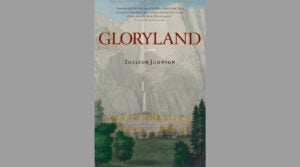
GLORYLAND, by Shelton Johnson (2009)
This historical fiction, written by a Yosemite park ranger, tells the tale of Elijah Yancy, who was born to Black and Native American sharecroppers on Emancipation Day in 1863. He walked west to discover his country, the beauties of the Yosemite valley, and his humanity.
Free sample: “All you need to get to heaven is a good pair of boots.”
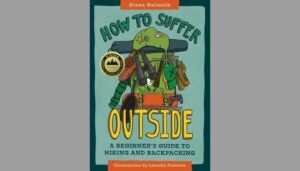
HOW TO SUFFER OUTSIDE: A BEGINNER’S GUIDE TO HIKING AND BACKPACKING, by Diana Helmuth (2021)
Backpacking is the most fun you can have while being utterly miserable. Helmuth helps hikers laugh through the quarter-sized blisters and the freezing rain, and provides useful tips for anyone venturing outdoors.
Free sample: “Grab the [pack] straps behind your head and pull them down, like the legs of a toddler that you’ll kick off your back if it doesn’t stop flailing. You should feel like your pack is teetering off your hips, with about an inch between your shoulder and the shoulder strap. Adjusted properly, it should feel like more of your weight is being carried by your hips, not your shoulders. Good job—you’re on your way to becoming a chiropractor’s dream.”
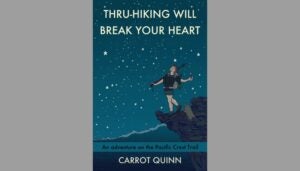
THRU-HIKING WILL BREAK YOUR HEART: AN ADVENTURE ON THE PACIFIC CREST TRAIL, by Carrot Quinn (2015)
An internet addict finds community in the all-too-real world of the Pacific Crest Trail.
Free sample: “Time disappears, and it is just me and the mountain, and the wind. I have always been in this windstorm, I think, as I fight my way forward. And I will always be in this windstorm. Up ahead, on a ridge, is a single tree. Someday, I think, I am going to be reincarnated as that tree. As punishment for every choice I’ve ever made. Or as a reward.”
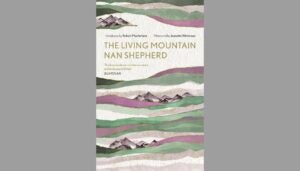
THE LIVING MOUNTAIN: A CELEBRATION OF THE CAIRNGORM MOUNTAINS OF SCOTLAND, by Nan Shepherd (1977)
The Scottish novelist, poet, and naturalist penned this ode to the Scottish Cairngorm mountains. She is a spiritual sister to Annie Dillard, and her book is a light carry: only 167 pages.
Free sample: “Simply to look on anything, such as a mountain, with the love that penetrates to its essence, is to widen the domain of being in the vastness of non-being. Man has no other reason for his existence.”

WILD: FROM LOST TO FOUND ON THE PACIFIC CREST TRAIL, by Cheryl Strayed (2012)
She lost her mom, quit her marriage, and even lost her hiking boots along the Pacific Crest Trail. But along the way from the Mojave Desert to Oregon, she gained a new sense of self and life direction she previously lacked.
Free sample: “I knew that if I allowed fear to overtake me, my journey was doomed. Fear, to a great extent, is born of a story we tell ourselves, and so I chose to tell myself a different story from the one women are told. I decided I was safe. I was strong. I was brave. Nothing could vanquish me.”
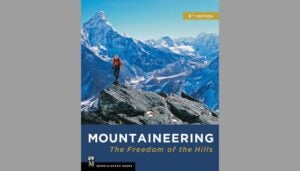
MOUNTAINEERING: FREEDOM OF THE HILLS, by Mountaineers Books (1960, 9th edition 2017)
Crafted and updated by 40 mountaineering experts, this tome is the definitive skill manual for mountaineers.
Free sample: “If the only answer [to your hiking predicament] is silence, sit down, regain your calm, and combat terror with reason. Once you have calmed down, start doing the right things.”
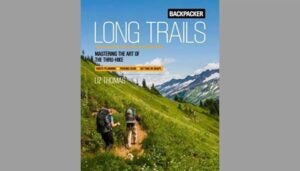
LONG TRAILS: MASTERING THE ART OF THE THRU HIKE, by Liz “Snorkel” Thomas (2017)
Published in partnership with Backpacker, the manual for aspiring thru-hikers won a National Outdoor Book Award for a good reason: Thomas did her research on every long trail you can name. Don’t leave Springer Mountain, Georgia, without it.
Free sample: “A lot of hikers quit when it gets hard. Seventy percent of folks who start the Appalachian Trail don’t finish. The biggest difference between those who meet their goals and those who don’t? It’s not that they’re younger or fitter or richer or more disciplined. It’s that they’re better at winning the mental game that thru-hiking demands.”

SEVEN YEARS IN TIBET, by Heinrich Harrer (1953)
Harrer, an accomplished Austrian mountaineer—and, less laudably, a member of the SS —ended up in a British internment camp after World War II broke out while he was on a Himalayan expedition. He escaped, and then tramped around Tibet for seven years, teaching the young Dalai Lama along the way. His book was fodder for a Brad Pitt movie.
Free sample: “The absolute simplicity. That’s what I love. When you’re climbing your mind is clear and free from all confusions. You have focus. And suddenly the light becomes sharper, the sounds are richer and you’re filled with the deep, powerful presence of life.”
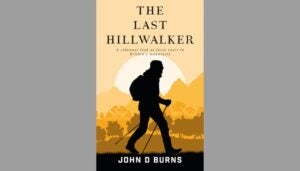
THE LAST HILLWALKER: A SIDEWAYS LOOK AT FORTY YEARS IN BRITAIN’S MOUNTAINS, by John D. Burns (2017)
Burns may not truly be the last hillwalker, but he is among the most passionate and erudite, chronicling his lifetime of walks in England’s Lake District, the Scottish Highlands, and the American and Canadian Rockies. Plus, he quotes the Talking Heads song “Psycho Killer” before chapter one.
Free sample: “All my years of climbing experience tell me that the next few feet of rock are close to impossible—but there is no other way, so that is the route I have to follow. I curse myself for my stupidity in getting me and my climbing partner, Joe, into this position. I think about my two girls, my wife, and then I take the only option there is: I keep moving.”
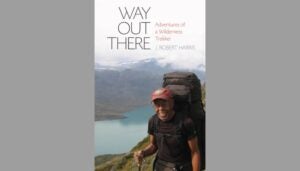
WAY OUT THERE: ADVENTURES OF A WILDERNESS TREKKER, by J. Robert Harris (2017)
As a young Black man living in New York City, Harris packed his VW and headed off to Alaska to begin a lifetime of adventuring. He has solo hiked everywhere you want to go, met all kinds of characters along the way, and spun campfire yarns about all of it.
Free sample: “The intrepid Road Runner reached for the still unopened tent box. What came out was a cheap red and yellow canvas tent that was only about waist high. It was indeed teepee shaped, but it had a pole down the center that made the interior too small to fit into. Even worse, on the tent’s side wall was a picture of a cowboy sitting on a bucking horse. Coming from his mouth was a word bubble that read, YIPPEEE!”
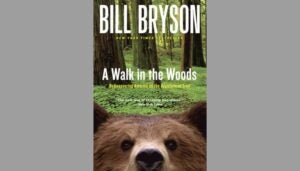
A WALK IN THE WOODS: REDISCOVERING AMERICA ON THE APPALACHIAN TRAIL, by Bill Bryson (1998)
Maybe you should just stay in your easy chair by the fire, instead of attempting the Appalachian Trail. Bryson hiked most of it for you already, and his suffering is funnier than yours.
Free sample: “Black bears rarely attack. But here’s the thing. Sometimes they do. All bears are agile, cunning and immensely strong, and they are always hungry. If they want to kill you and eat you, they can, and pretty much whenever they want. That doesn’t happen often, but—and here is the absolutely salient point—once would be enough.”

THE OLD WAYS: A JOURNEY ON FOOT, by Robert Macfarlane (2012)
British super-stroller Macfarlane has criss-crossed Great Britain on foot. His record of the journey muses on history, the nature of pilgrimages, and the ghosts who haunt the walker along the way.
Free sample: “We tend to think of landscapes as affecting us most strongly when we are in them or on them, when they offer us the primary sensations of touch and sight. But there are also the landscapes we bear with us in absentia, those places that live on in memory long after they have withdrawn in actuality, and such places—retreated to most often when we are most remote from them—are among the most important landscapes we possess.”
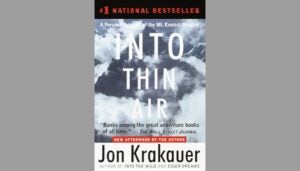
INTO THIN AIR, by Jon Krakauer (1997)
1996 was a killer season for climbers on Everest, and Jon Krakauer had the mixed fortune to be on the mountain working on an article for Outside. The book that emerged from that trauma quickly became a classic of mountain literature.
Free sample: “It was titillating to brush up against the enigma of mortality, to steal a glimpse across its forbidden frontier. Climbing was a magnificent activity, I firmly believed, not in spite of the inherent perils, but precisely because of them.”
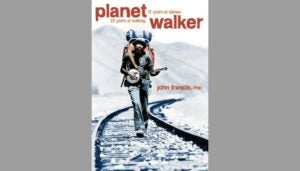
PLANETWALKER: 22 YEARS OF WALKING. 17 YEARS OF SILENCE., by John Francis, Ph.D. (2005)
He quit motorized transport and walked across two continents. For 17 years, he also observed a vow of silence as an environmental protest.
Free sample: “As you walk, look around, assess where you are, reflect on where you have been, and dream of where you are going. Every moment of the present contains the seeds of opportunity for change. Your life is an adventure. Live it fully.”
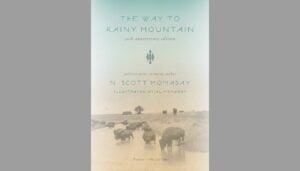
THE WAY TO RAINY MOUNTAIN, N. Scott Momaday (1969)
Pultizer Prize-winning novelist Momaday collects stories as old as the land, from his father, from the ancestral voices of his people, and from the Kiowa oral tradition.
Free sample: “East of my grandmother’s house the sun rises out of the plain. Once in his life a man ought to concentrate his mind upon remembered earth, I believe. He ought to give himself up to a particular landscape in his experience, to look at it from as many angles as he can, to wonder about it, to dwell upon it. He ought to imagine that he touches it with his hands at every season and listens to the sounds that are made upon it. He ought to imagine the creatures there and all the faintest motions of the wind. He ought to recollect the glare of noon and all the colors of the dawn and dusk.”
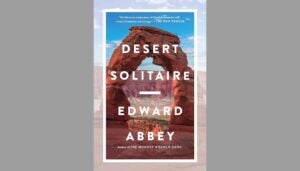
DESERT SOLITAIRE: A SEASON IN THE WILDERNESS, by Edward Abbey (1968)
Abbey, a backcountry caretaker turned environmental activist, was right: We’d love Arches National Park to death. And yet, what a masterful elegy for cactus and dust.
Free sample: “Wilderness is not a luxury but a necessity of the human spirit, and as vital to our lives as water and good bread. A civilization which destroys what little remains of the wild, the spare, the original, is cutting itself off from its origins and betraying the principle of civilization itself.”

THE COMPLETE WALKER, by Colin Fletcher (1968)
A definitive guide to the gear that will get you out there, this manual also discusses the reasons why you’ll want to go. After your brain and backpack are outfitted, read Fletcher’s other classic, The Man Who Walked Through Time, about his descent into the Grand Canyon.
Free sample: “If you judge safety to be the paramount consideration in life you should never, under any circumstances, go on long hikes alone. Don’t take short hikes alone, either—or, for that matter, go anywhere alone. And avoid at all costs such foolhardy activities as driving, falling in love, or inhaling air that is almost certainly riddled with deadly germs … And never, of course, explore the guts of an idea that seems as if it might threaten one of your more cherished beliefs. In your wisdom you will probably live to be a ripe old age. But you may discover, just before you die, that you have been dead for a long, long time.”
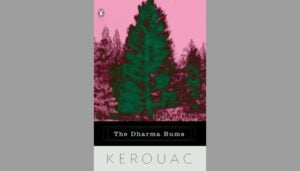
THE DHARMA BUMS, by Jack Kerouac (1958)
One year after On the Road, the beatnik hit the trail, chasing zen, his next drink (and the one after that), plus mountain vigils in the High Sierras.
Free sample: “I felt like lying down by the side of the trail and remembering it all. The woods do that to you, they always look familiar, long lost, like the face of a long-dead relative, like an old dream, like a piece of forgotten song drifting across the water, most of all like golden eternities of past childhood or past manhood and all the living and the dying and the heartbreak that went on a million years ago and the clouds as they pass overhead seem to testify (by their own lonesome familiarity) to this feeling.”
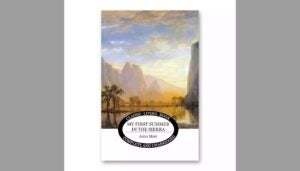
MY FIRST SUMMER IN THE SIERRA, by John Muir (1911)
Yet another Scotsman yearning for the Highlands while walking American trails. Muir left a troubling legacy based on his interactions with Indigenous people, but also played a crucial role in preserving Yosemite Valley from development. Through his eyes, you can see it as it was before the campervans invaded.
Free sample: “We are now in the mountains and they are in us, kindling enthusiasm, making every nerve quiver, filling every pore and cell of us.”

THE GENTLE ART OF TRAMPING, by Stephen Graham (1926)
Graham elevates that urge to set out for anywhere to a life philosophy, with nature as its deity and heavenly reward.
Free sample: “On the road the weak and strong points of character are revealed. There are those who complain, making each mile seem like three; there are those who have untapped reserves of cheerfulness, who sing their companions through the tired hours. But in drawing-rooms they would never show either quality. The road shows sturdiness, resourcefulness, pluck, patience, energy … or the lack of these things.”
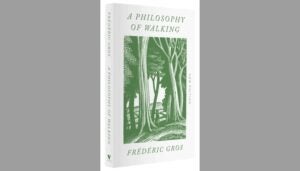
THE PHILOSOPHY OF WALKING, by Frédéric Gros (2009)
If you’re trying to convince a loved one to let you hit the long and winding trail, throw this book at them. It examines the rationales that Henry David Thoreau, Arthur Rimbaud, Freidrich Nietzche, and other sages employed for their enthusiastic walking.
Free sample: “None of your knowledge, your reading, your connections will be of any use here: two legs suffice, and big eyes to see with. Walk alone, across mountains or through forests. You are nobody to the hills or the thick boughs heavy with greenery. You are no longer a role, or a status, not even an individual, but a body, a body that feels sharp stones on the paths, the caress of long grass and the freshness of the wind.”

A SAND COUNTY ALMANAC: AND SKETCHES HERE AND THERE, Aldo Leopold (1949)
While tramping around Wisconsin, Arizona, and Manitoba, Leopold, a naturalist, makes compelling cases for ethical treatment of the land and the animals on it.
Free sample: “We reached the old wolf in time to watch a fierce green fire dying in her eyes. I realized then, and have known ever since, that there was something new to me in those eyes—something known only to her and to the mountain. I was young then, and full of trigger-itch; I thought that because fewer wolves meant more deer, that no wolves would mean hunters’ paradise. But after seeing the green fire die, I sensed that neither the wolf nor the mountain agreed with such a view.”

WALKING, by Henry David Thoreau (1861)
Thoreau is the philosopher king of “one foot in front of the other.” Read here for a thousand reasons to lace up your boots and go.
Free sample: “In Wildness is the preservation of the World.”
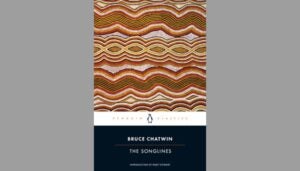
THE SONGLINES, by Bruce Chatwin (1987)
On foot in the harsh Australian outback, Chatwin follows the sacred pathways of Indigenous Australians and shares a profound cultural re-education.
Free sample: “A Bushman child will be carried a distance of 4,900 miles before he begins to walk on his own. Since, during this rhythmic phase, he will be forever naming the contents of his territory, it is impossible he will not become a poet.”
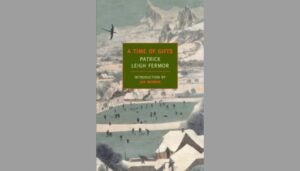
A TIME OF GIFTS, by Patrick Leigh Fermor (1977)
This book, and its sequels, recounts Fermor’s walk from Hook, Holland, to Istanbul. It combines his observations about Europe during the run-up to World War II with the observations of a devoted naturalist.
Free sample: “The notion that I had walked twelve hundred miles since Rotterdam filled me with a legitimate feeling of something achieved. But why should the thought that nobody knew where I was, as though I were in flight from bloodhounds or from worshipping corybantes* bent on dismemberment, generate such a feeling of triumph? It always did.”
*armed dancers of Greek mythology. Yikes!

PILGRIM AT TINKER CREEK, by Annie Dillard (1974)
She spent a year walking around Tinker Creek, Virginia, and noticed more natural nuances and delights than you will in your whole lifetime. Unless you start working really hard at it right now, that is.
Free sample: “Nature is, above all, profligate. Don’t believe them when they tell you how economical and thrifty nature is, whose leaves return to the soil. Wouldn’t it be cheaper to leave them on the tree in the first place? This deciduous business alone is a radical scheme, the brainchild of a deranged manic-depressive with limitless capital. Extravagance! Nature will try anything once.”

THE SUN IS A COMPASS: MY 4,000-MILE JOURNEY INTO THE ALASKAN WILDS, by Caroline Van Hemert (2019)
As a lab-trained ornithologist, Van Hemert felt stifled by academia. So she and her husband traveled 4,000 miles across Alaska by rowboat, skis, raft, and canoe, and experienced all of the joys and terrors of that wild and dangerous landscape.
Free sample: “We leave the Haul Road behind and enter a landscape that opens itself to us. Valleys dance beneath the autumn sunlight, and the ground holds firm and solid underfoot. The tussocks that plagued us for weeks have finally given way to bare, lichen-covered slopes. My muscles lengthen and flex with each stride. I have begun to understand what it means to live in constant motion. Like caribou. Like water. Like geese on their long annual migrations.”
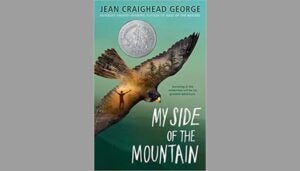
MY SIDE OF THE MOUNTAIN, by Jean Craighead George (1959)
Feeling hemmed in by life in New York City, Sam Gribley runs off to his grandfather’s abandoned farm in the Catskills. It’s a young adult novel, with lessons we grownups can learn—or relearn—as well. Read it with a teenager you love.
Free sample: “Fortunately, the sun has a wonderfully glorious habit of rising every morning. When the sky lightened, when the birds awoke, I knew I would never again see anything so splendid as the round red sun coming up over the earth.”
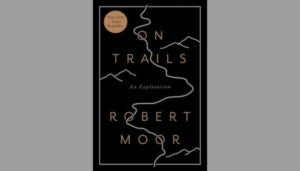
ON TRAILS: AN EXPLORATION, by Robert Moor (2016)
What are trails, and why do we create and follow them? Where are they going, really? Moor spent seven years exploring trails (virtual and literal) around the world to seek answers.
Free sample: “I often felt this way on the trail: I was able to hold both one notion and its direct opposite in my mind at the same time. Paths, in their very structure, foster this way of thinking. They blear the divide between wilderness and civilization, leaders and followers, self and other, old and new, natural and artificial.”
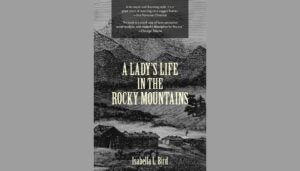
A LADY’S LIFE IN THE ROCKY MOUNTAINS, by Isabella Bird (1879)
An English gentlewoman demonstrates her grit, stamina, and powers of observation during an 1873 trek through the Rocky Mountains.
Free sample: “In traveling, there is nothing like dissecting people’s statements, which are usually colored by their estimate of the powers or likings of the person spoken to, making all reasonable inquiries, and then pertinaciously but quietly carrying out one’s own plans.”
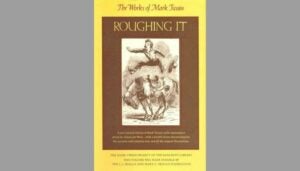
ROUGHING IT, by Mark Twain (1872)
Twain’s semi-fictional tramp through Nevada, California, and the Hawaiian Islands may only be hiking adjacent. But his trek offers a firsthand look at how greed drove white Americans to open up and exploit the west.
Free sample: “This book is merely a personal narrative, and not a pretentious history or a philosophical dissertation. It is a record of several years of variegated vagabondizing, and it’s object is rather to help the resting reader while away an idle hour than afflict him with metaphysics, or goad him with science.”
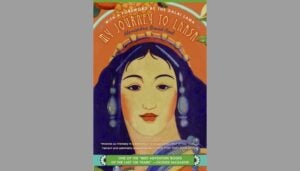
MY JOURNEY TO LHASA, by Alexandra David-Néel (1927)
Disguised as a beggar, with yak-hair extensions no less, David-Néel was the first western woman to trek to Tibet’s forbidden city.
Free sample: “I craved to go beyond the garden gate, to follow the road that passed it by, and to set out for the Unknown.”
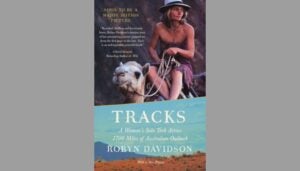
TRACKS: A WOMAN’S SOLO TREK ACROSS 1700 MILES OF AUSTRALIAN OUTBACK, by Robyn Davidson (1980)
To prepare for her trek through the deserts of western Australia, Davidson trained four wild camels to schlep her stuff. But they were little help with the creepy strangers and venomous snakes she encountered along the way.
Free sample: “The question I’m most commonly asked is ‘Why?’ A more pertinent question might be, why is it that more people don’t attempt to escape the limitations imposed upon them? If Tracks has a message at all, it is that one can be awake to the demand for obedience that seems natural simply because it is familiar. Wherever there is pressure to conform (one person’s conformity is often in the interests of another person’s power), there is a requirement to resist.”

A SHORT WALK IN THE HINDU KUSH, by Eric Newby (1958)
He’s not much of a mountaineer, but Newby is amusing company as he recounts his trek in Afghanistan, which he plays for laughs and gasps.
Free sample from the introduction by Evelyn Freakin’ Waugh, no less: “[Newby] was no mountaineer when he decided to climb the Hindu Kush. A few days scrambling on the rocks in Wales, enchantingly chronicled here, were his sole preparation. It was not mountaineering that attracted him; the Alps abound in opportunities for every exertion of that kind. It was the longing, romantic, reasonless, which lies deep in the hearts of most Englishmen, to shun the celebrated spectacles of the tourist and without any concern with science or politics or commerce, simply to set their feet where few civilized feet have trod.”
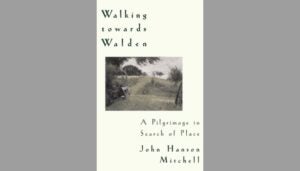
WALKING TOWARDS WALDEN: A PILGRIMAGE IN SEARCH OF PLACE, by John Hanson Mitchell (1995)
Unlike many of the trekker-authors here, Mitchell bushwhacked a mere 15 miles on his way to Thoreau’s famed hermitage. But he takes the long, interesting way around many subjects (art, music, myth) he tripped over enroute.
Free sample: “I am not drawn by expeditions into remote, untrammeled territories where no man, woman, or child has set foot in a thousand years. What lures me is the undiscovered country of the known world, the extant local landscapes where human events have flourished and faded. What I want to do is decode what the Spanish call querencia, the deep and abiding allegiance some people feel for a given piece of land.”
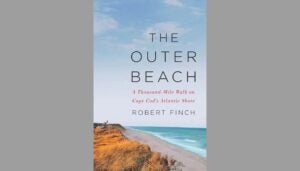
THE OUTER BEACH: A THOUSAND-MILE WALK ON CAPE COD’S ATLANTIC SHORE, by Robert Finch (2017)
A first for this list: A stroll on the beach. Finch, a naturalist, ranged far beyond his towel, encountering beached whales and nude sunbathers along the way.
Free sample: “I think I took him to the beach that winter’s day to show him that it offered a truer image of the human condition. One’s foundations continually shift here; the sea regularly breaks through in new places, constantly forming new inlets, closing off old ones, running in new currents. The beach teaches us the need to adapt continually to change, always to be watching for undertows and rogue waves, to dance nimbly along its edges. If I have learned anything from living here, it is that this world is not geared for large answers, and certainly not for final ones.”
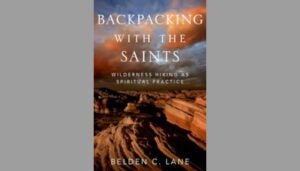
BACKPACKING WITH THE SAINTS: WILDERNESS HIKING AS SPIRITUAL PRACTICE, by Belden C. Lane (2014)
Fastpackers, don’t try this: Lane carried the works of Rumi, Thomas Merton, Tich Nhat Hahn, and other heavy thinkers as his hiking companions in the Ozarks and the American southwest. Philosophy ensues.
Free sample: “Wilderness backpacking can be a form of spiritual practice … Exposure to the harsh realities and fierce beauties of a world not aimed at my comfort has a way of cutting through the self-absorption of my life. The uncontrolled mystery of nature puts the ego in check and invites the soul back (in more than one way) to the ground of its being. It elicits the soul’s deepest desire, enforces a rigorous discipline, and demands a life marked by activism and resistance. It reminds me, in short, that spiritual practice—far from being anything ethereal—is a highly tactile, embodied, and visceral affair.”

SKYWALKER: CLOSE ENCOUNTERS ON THE APPALACHIAN TRAIL, by Bill Walker (2008)
A commodities trader chucks it all to hike the AT. He had an advantage: His last name was “walker” after all.
Free sample: “Walking the AT is not recreation … It is an education and a job. And walking the entire AT is not ‘going on a hike,’ but a journey with deeper ramifications.”
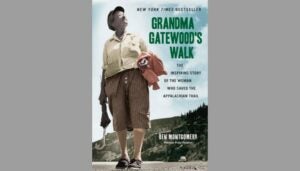
GRANDMA GATEWOOD’S WALK: THE INSPIRING STORY OF THE WOMAN WHO SAVED THE APPALACHIAN TRAIL, by Ben Montgomery (2014)
When she reached the summit of Katahdin on September 25, 1955, as the first solo woman to complete the AT in one go, 67-year-old Emma Gatewood sang the first verse of “America, the Beautiful,” and proclaimed: “I said I’ll do it, and I’ve done it.”
Free sample: “The trail was designed to have no end, a wild place on which to be comfortably lost for as long as one desired. In those early days nobody fathomed walking the thing from beginning to end in one go. Section hikes, yes. Day hikes, too. But losing yourself for five months, measuring your body against the earth, fingering the edge of mental and physical endurance, wasn’t the point. The trail was to be considered in sections, like a cow is divided into cuts of beef. Even if you sample every slice, to eat the entire beast in a single sitting was not the point. Before 1948, it wasn’t even considered possible.”
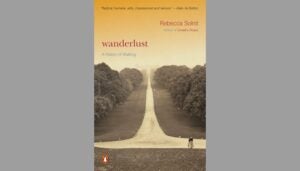
WANDERLUST: A HISTORY OF WALKING, by Rebecca Solnit (2001)
Wait. Walking has a history? Read this before you take another step, so you know what you’re in for.
Free sample: “Perhaps walking is best imagined as an ‘indicator species,’ to use an ecologist’s term. An indicator species signifies the health of an ecosystem, and its endangerment or diminishment can be an early warning sign of systemic trouble. Walking is an indicator species for various kinds of freedom and pleasures: free time, free and alluring space, and unhindered bodies.”

A BOOK OF SILENCE, by Sara Maitland (2008)
The author tuned in to the quiet of the Sinai desert, the Australian outback, and the Isle of Skye. Her memoir explores the historical and cultural significance of silence.
Free sample: “There are those awed responses to certain demonstrations of the ‘natural’ world, in which words, and even normal emotional reactions, fail or rather step back from the experience. Some natural phenomena, even though silent in themselves, tend to bring on sensations of peace or contentment, rather than awe and ineffability. For the full effect of the sublime to work there has to be an element of power and of something essentially inhumane. Different phenomena do it for different individuals: mountain ranges, meteor showers, large waterfalls and long views from high cliffs are examples of the kind of silencing events I am thinking of here.”
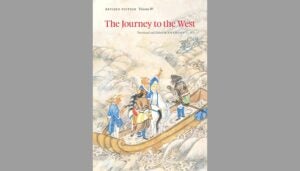
THE JOURNEY TO THE WEST, by Wu Cheng’en (1592)
This cultural bellwether of a novel recounts a 16-year pilgrimage from China to India, featuring a religious leader and four disciples who happened to be animals.
Free sample: “Pilgrim said, ‘You can walk from the time of your youth till the time you grow old, and after that, till you become youthful again; and even after going through such a cycle a thousand times, you may still find it difficult to reach the place you want to go to. But when you perceive, by the resoluteness of your will, the Buddha-nature in all things, and when every one of your thoughts goes back to its very source in your memory, that will be the time you arrive at the Spirit Mountain.’”
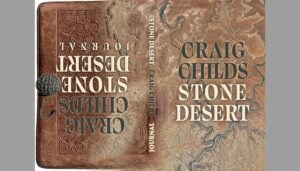
STONE DESERT, by Craig Childs (1995)
Thirty years ago, the naturalist and artist wrote a treasured book about his travels in Canyonlands National Park. Now it has been re-published, along with his journals and drawings.
Free sample: “I walked out and sat at the edge of Dead Horse Point looking down into Canyonlands in the moonlight. And it looked alive. It looked like it was growing and thriving and moving. And you could see the blue shadows dropping into canyons and you could see all the towers. Whatever it is you do in your life, this is in the middle of it. Never leave this place.”

THE SALT PATH, by Raynor Winn (2018)
Winn and her terminally ill husband put 630 miles between themselves and his final destination by walking England’s South West Coast Path, through Devon and Cornwall. Along the way they discovered truths about grief, home, and the healing powers of nature.
Free sample: “On a basic level, maybe all of us on the path were the same; perhaps we were all looking for something. Looking back, looking forward, or just looking for something that was missing. Drawn to the edge, a strip of wilderness where we could be free to let the answers come, or not, to find a way of accepting life, our life, whatever that was.”

THE UNLIKELY THRU-HIKER: AN APPALACHIAN TRAIL JOURNEY, by Derick Lugo (2019)
A Black, citified comedian engaged, hilariously and with impeccable grooming, in what society told him was the most white of activities: Hiking the AT. His trail name, Mr. Fabulous, says it all.
Free sample: Upon hearing his plan to hit the AT, Lugo’s friend asked some good questions: “‘Listen, pretty boy, I know you. You are the most well-groomed, metrosexual Black man in New York City. You, in the woods, without your mirror, your beauty products, your designer clothes? Please! How will you shower?’”
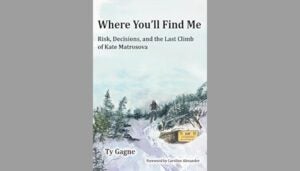
WHERE YOU’LL FIND ME: RISK, DECISIONS, AND THE LAST CLIMB OF KATE MATROSOVA, by Ty Gagne (2017)
Kate Matrosova, a skilled mountaineer, set out on a February hike in the Presidential Range in New Hampshire. Then she met a killer storm.
Free sample: “We often decide that an outcome is extremely unlikely or impossible because we are unable to imagine any chain of events that could cause it to occur. The defect, often, is our imagination.”
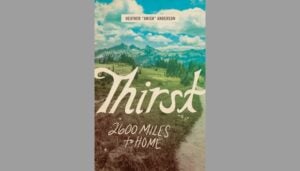
THIRST: 2600 MILES TO HOME, by Heather “Anish” Anderson (2019)
A Triple Crown backpacker (AT, PCT, CDT) by age 25, Anderson met a whole-life meltdown by walking through the pain. It was the only way she could find the home she was looking for.
Free sample: “I had never thought that I was good enough, fast enough, strong enough, thin enough, pretty enough, smart enough, or any other ‘enough.’ Nothing I did had ever met my own unattainable expectations of what ‘enough’ was. Is that why I threw myself into the hardest physical endeavor I could think of? Was I simply desperate to do something that would make me approve of myself?”
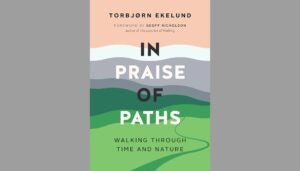
IN PRAISE OF PATHS: WALKING THROUGH TIME AND NATURE, by Torbjørn Ekelund (2020)
Epilepsy knocked him from the driver’s seat of his car, so Ekelund began walking everywhere. He found that it’s the only way to get anywhere important.
Free sample: “A person who is running as quickly as possible has their attention focused on their own body. Whereas the attention of a person walking slowly is aimed away from themselves, toward the world and everything outside.”
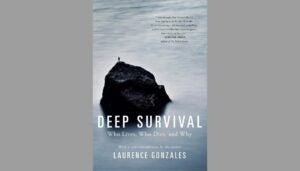
DEEP SURVIVAL: WHO LIVES, WHO DIES, AND WHY, by Laurence Gonzales (1998)
The book’s subhead says it all. Gonzales takes a scientific look at what it takes to endure harrowing life-or-death predicaments, with plenty of adventure storytelling to keep you hooked.
Free sample: “The perfect adventure shouldn’t be that much more hazardous in a real sense than ordinary life, for that invisible rope that holds us here can always break. We can live a life of bored caution and die of cancer. Better to take the adventure, minimize the risks, get the information, and then go forward in the knowledge that we’ve done everything we can.”
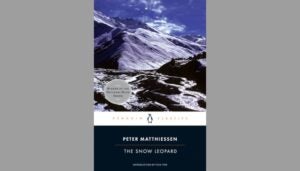
THE SNOW LEOPARD, by Peter Matthiessen (1978)
Spoiler alert: During his arduous travels through the high Himalayas, Matthiessen never spots one. But that’s kind of the point: What’s a quest for, unless the goal is elusive?
Free sample: “The secret of the mountain is that the mountains simply exist, as I do myself: the mountains exist simply, which I do not. The mountains have no ‘meaning,’ they are meaning; the mountains are. The sun is round. I ring with life, and the mountains ring, and when I can hear it, there is a ringing that we share. I understand all this, not in my mind but in my heart, knowing how meaningless it is to try to capture what cannot be expressed, knowing that mere words will remain when I read it all again, another day.”
ALSO LIST-WORTHY!
As if those 50 weren’t enough …
I HIKE: MOSTLY TRUE STORIES FROM 10,000 MILES OF HIKING, by Lawton Grinter; AS FAR AS THE EYE CAN SEE: REFLECTIONS OF AN APPALACHIAN TRAIL HIKER, by David Brill; JOURNEYS NORTH: THE PACIFIC CREST TRAIL, by Barney Scout Mann; OVER THE EDGE: DEATH IN GRAND CANYON, by Michael P. Ghiglieri and Thomas M. Myers; THE ROYAL ROAD TO ROMANCE, by Richard Halliburton; LOST IN THE WILD: DANGER AND SURVIVAL IN THE NORTH WOODS, by Cary J. Griffith; TRAIL OF THE LOST: THE RELENTLESS SEARCH TO BRING HOME THE MISSING HIKERS OF THE PACIFIC CREST TRAIL, by Andrea Lankford; WEIR’S WAY, by Tom Weir; THE WILDERNESS JOURNALS OF EVERETT RUESS; SO LONG AS IT’S WILD: STANDING STRONG AFTER MY FAMOUS WALK ACROSS AMERICA, by Barbara Jenkins; SEND A RUNNER: A NAVAJO HONORS THE LONG WALK, by Edison Eskeets and Jim Kristofic; PATH OF LIGHT: A WALK THROUGH COLLIDING LEGACIES OF GLEN CANYON, by Morgan Sjogren; WINDSWEPT: WALKING THE PATHS OF TRAILBLAZING WOMEN, by Annabel Abbs.; THE NARROW ROAD TO THE INTERIOR, by Matsuo Bashō PLUS whatever hiking/tramping/backpacking/walking book you love that I failed to include here. Happy reading and even happier trails.
From 2024
